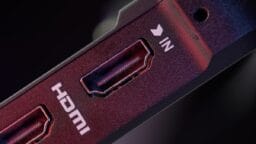Today, portable devices such as laptops and tablets are more or less replacing conventional desktop computers in most modern business environments. Furthermore, cloud computing is increasingly being adopted by companies for their IT infrastructure. This method is empowering the employees to gain access to corporate data and enterprise applications anywhere and on any device. Businesses have become more mobile and flexible as a result.
With increased mobility and flexibility, cybercriminals are finding new ways to penetrate the devices being used by the organization. This is increasing the complexity of managing and securing these devices along with the data contained in them. These challenges, including malware, ransomware, phishing, and cloud vulnerabilities, make the adoption of Mobile Device Management (MDM) solutions among the essential reasons for businesses. Other major reasons include the ability to remotely manage the portable devices and safeguard the corporate data by performing a remote wipe in the event if the data is leaked or compromised.
Mobile Device Management is a topic we’ll explore in this article, including its definition, advantages, and why it should be implemented! Let’s get started…
What is Mobile Device Management (MDM) Software?

Mobile Device Management, also known as MDM, is a combination of tools, technologies, and processes designed to enhance the security of corporate assets, such as laptops, phones, tablets, and other endpoints used within an organization.
With MDM in place, IT administrators can deploy, authorize and administer corporate security policies on corporate-owned as well as employee-owned devices so as to protect the corporate critical data contained within them in the event of data comptonization, leakage, or stolen device. Moreover, organizations can also push enterprise apps and/or content on mobile devices to derive optimum results by diverting the employee’s attention to operations that are crucial to the business.
MDM serves the following purposes:
- Ensuring that each device adheres to the settings/policies established by the organization.
- Automating the process of updating devices, software, and applications.
- Monitoring employee usage of applications according to the organization’s policy.
- Maintaining, monitoring, and tracking the performance of devices.
- Diagnose, troubleshoot, and secure devices remotely.
Recommended for you: How to Start a Small Business with PPC Ads?
Why Mobile Device Management is Essential for business?

These are some of the primary reasons for implementing an MDM in an organization.
1. An enhanced level of security on Mobile devices

MDM solutions safeguard the confidential information present on mobile devices used by the employees against cyberattacks, unauthorized access, and leaks, ensuring that the organization retains control over its digital assets. Mobile device management solutions can be used to remotely lock, manage, secure, and wipe all the data from lost or stolen mobile devices to prevent data comptonization.
Managing policies, applications, and other functions through MDM provides your business with more control over its processes. For instance, you can allow access to a URL(s) and push it on all the devices used for corporate purposes. This will restrict the end-user to visit or gain access to any unauthorized/unsafe websites apart from the one allowed by the company. This prevents malicious software/URL(s) from gaining access to corporate data and applications.
2. Reduction of costs to a marginal extent

The implementation of the Bring Your Own Device (BYOD) in the workplace can enable businesses to reduce the costs of investing in the devices to deploy among employees. BYOD or “Bring Your Own Devices” refers to the practice wherein the employees, partners, and other associates of an organization use their own devices like smartphones, laptops, and other digital assets, which are connected to the company’s network to contribute to its operations.
As a result of eliminating this hefty expense, your business can operate more efficiently and devote more funds to core activities such as investing in an MDM solution to remotely manage, secure, and monitor the employee-owned devices to safeguard the corporate data and boost the productivity of employees.
Through remote wiping and containerization features, unsafe website visits and infected downloads can be reduced and contained in the BYOD trend. Incorporating these settings can spare the company a hefty expense, inconvenience, and possible goodwill comptonization associated with malware and data breaches.
Corporations must notify consumers if they suffer a data breach under the Digital Privacy Act (Bill S-4). A fine of up to $100,000 may be imposed on an organization that knowingly fails to comply with this notification requirement. Your corporation may lose its hard-earned reputation and business opportunities if it has a personal information breach, and the incident is made public.
MDM prevents organizations from having to deal with either of these potentially damaging scenarios – there are no reports, fines, or public announcements required. With data wiping and containerization, organizations can protect their businesses and reputation from hefty fines and reputational damage.
3. Maximize efficiency

Due to its centralized management interface, MDM solutions offer a reduction in IT administration time and resources. Applications, policies, and corporate settings can be added, updated, or deleted from a single management interface by the IT admin as and when required.
MDM also enables the companies to identify which employee has which mobile device using the asset management tracking feature. By centralizing management and simplifying asset tracking, mobile device management reduces IT departments’ burden of managing a large fleet of devices manually.
What are the benefits of MDM to businesses?

In the following sections, we outline some of the key benefits of Mobile Device Management for businesses.
1. Ease of management

Mobile device management offers the primary benefit of allowing businesses to monitor and manage their portable devices such as smartphones, tablets, and laptops on the go. By using MDM, enterprise applications can be installed and configured, IT can push updates and ensure device security is maintained, all remotely. Especially for organizations with remote employees, this makes it a vital tool. The benefits of MDM solutions are significant since they streamline and improve the remote deployment of portable mobile devices as securely as at the office.
Additionally, MDM solutions provide a scalable and consistent means of managing a large variety of devices, thereby facilitating the deployment, support, and enhancement of the mobility and flexibility of end-users. Mobile device management (MDM) makes managing a large fleet of mobile devices easy, reducing IT teams’ burden of device and security management.
You may like: 10 Excellent Tips to Grow Your Business Using Automation.
2. Allows users to bring their own devices (BYOD)

MDM’s containerization feature plays a significant role in corporate data protection when it comes to BYOD trends (Bring-your-own-device). Containerization is a means of isolating corporate information/data/apps from employee information/data/apps. This feature safeguards the corporate data against applications or websites containing malware, prevention copying the data outside corporate profiles like copying them or taking screenshots in an unauthorized manner and exposing it to personal files of the employees. The advantage of MDM is that it perfectly enables remote management of different types of devices and minimizes risks associated with BYOD.
3. Enhanced security and regulatory compliance

Through MDM, businesses can manage/control the configuration, security, and functionality settings of mobile devices. Through it, sensitive corporate information can be protected through the use of data containerization in BYOD, protection of emails and their attachments, and enforcement of corporate policies on corporate-owned as well as BYO devices. Therefore, MDM significantly reduces data loss risks.
The ability to remotely manage portable devices also improves corporate network security by allowing you to restrict users, encrypt sensitive data, and wipe sensitive information if a device is lost or stolen. Due to these security features, MDM has become an essential tool for any organization that needs to comply with SOC 2 requirements.
What should you look for in an MDM solution for your business?

Several different approaches and features are available in MDM solutions to streamline the management and monitoring of mobile devices by businesses. An MDM solution is not only comprised of security and access control features but also the following features:
- Over-the-air (OTA) Distribution,
- Remote Wipe,
- Live Device Location Tracking,
- Diagnostics and Device Troubleshooting,
- Application and Content Management,
- Deep-dive Analytics,
- Remote Commands,
- Reports & Workflows,
- & Many more.
It would be best if your MDM solution included all of the features listed above out-of-the-box. Although there are several MDM solutions available on the market, each differs slightly in terms of its capabilities.
Following, we have outlined a few features you should consider before implementing an MDM solution for your business.
1. Determine what features are needed

There is an increasing number of features available with MDMs today, such as over-the-air distribution, management of POS devices, BYOD capabilities, and a variety of privacy features. There is a chance that you might not need all the features available. The type of business you run and how you manage IT may decide whether or not you need to manage POS devices, BYOD capabilities, or any other relevant features. As a result, when making your decision, you shouldn’t invest in features that you don’t need by splurging on an expensive MDM solution.
2. Does it offer a trial period?

It is essential that an MDM solution you choose should support a trial period. During the trial period, it’s an opportunity to test out the MDM solution on corporate-owned mobile devices as well as the personal portable devices owned by the employees. The solution can be deployed and enrolled on varied platforms, and temporary management may be done to test out its potential and evaluate whether the MDM solution caters to the needs of the organization. Alternatively, you can discontinue the trial period if you believe it is not able to cater to the mobility needs.
3. What are the different types of devices and OS supported?

There are different types of smartphones, tablets, and laptops available in the market and used by organizations that operate on diversified operating systems such as Android, iOS, macOS & Windows. Some organizations may give their employees Android devices, while others may give them iOS, macOS, or even Windows devices, depending on the needs of the organization.
While choosing an MDM solution, IT admins need to consider the standpoint of deployment efficiency with ease across diversified platforms. No matter how many devices you have to enroll in, the process should be easy and quick. Admin interfaces and dashboards should be intuitive to use. You should choose an MDM program that integrates seamlessly into your existing systems.
4. Check whether After-sales services are available

MDM solutions require technical support as well, just like any other software. In either case, you’ll need some support after you implement the MDM, whether it’s on-premises or in the cloud.
In contrast, if you plan to manage an MDM solution internally or in-house, it is important to consider the communication channels such as phone, email, or chat, availability of the vendor for any technical support. Because corporate data and device security is at stake, you’d want 24-hour support and multiple channels of communication.
You may also like: How to Setup a Small Business Office for Success?
In closing lines…

To effectively manage a remote workforce, your company should implement the right mobile device management solution. Managing the mobile devices of your employees shouldn’t require your IT department to travel or make long phone calls as and when the need arises. An MDM solution should not cost a lot if you do not require enterprise-level features. Your needs may be met more effectively by a more cost-effective lightweight solution. Regardless of the solution you choose, make sure you test it out first to ensure it meets your needs while being easy to use.
This article is written by Ayush Maskara. Ayush is a content writer at Scalefusion android device management software. A media science graduate, a photographer, a fiction author, a storyteller, a fiction manuscript editor, and an avid self-help reader, Ayush has been penning the creative wisdom for six years and has stepped into the IT domain for further exploration and staying awake with technological trends across the globe.






